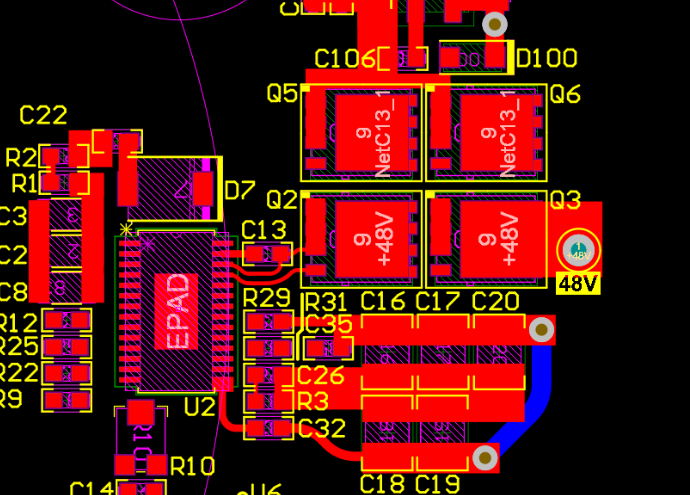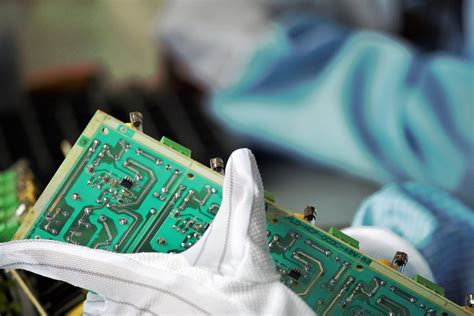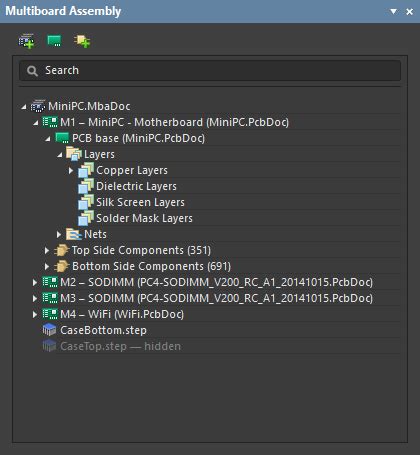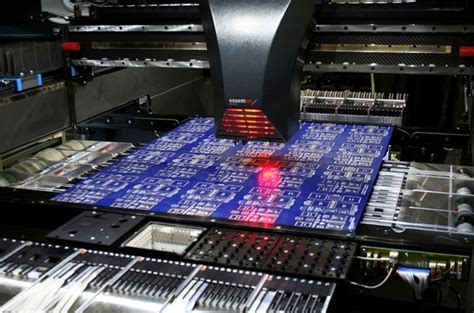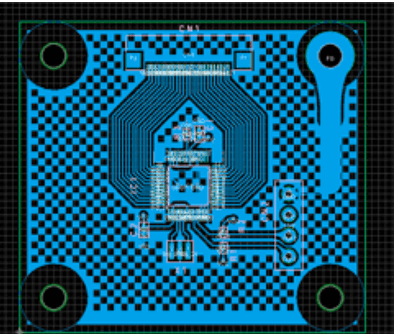Mastering Assembly Drawings for PCB: A Complete Guide to Precision and Innovation
Key Takeaways
The mastery of pcb assembly techniques is crucial for achieving high-quality printed circuit board (PCB) production. By understanding the principles laid out in a comprehensive guide, individuals in the field can significantly improve their skills in creating precise assembly drawings for PCB projects. Utilizing essential tools and software designed specifically for pcba documentation not only streamlines the process but also enhances accuracy. Effective layout strategies can further contribute to clear representation in assembly drawings, ensuring that every component is displayed with clarity and correctness. Adhering to established industry standards also plays a pivotal role in minimizing errors, thereby promoting a seamless workflow throughout all stages of electronics manufacturing. As engineers and designers engage with innovative practices discussed in the guide, they will unlock new avenues for improving their PCB assembly processes, elevating both efficiency and output quality. By honing these precision-driven skills, professionals will find themselves better equipped to meet the growing demands of modern electronics manufacturing while delivering projects that resonate with quality and expertise.
Introduction to Assembly Drawings in PCB Design
Assembly drawings are a critical component of PCB assembly as they serve as visual guides for engineers and technicians throughout the manufacturing process. These drawings detail the specific placement of components on the printed circuit board (PCB), ensuring that each part is located accurately for optimal functionality. In the realm of PCBA, precision is paramount; any misalignment can lead to flawed performance and costly rework. Thus, understanding how to create effective assembly drawings is essential.
A well-constructed assembly drawing not only illustrates the physical layout but also includes annotations, such as component values and identifiers, which facilitate clear communication among team members. By adhering to standard symbology and conventions, designers can craft documents that are universally understood across different sectors in the electronics industry.
Moreover, embracing innovative practices can significantly enhance the clarity and effectiveness of these drawings. For instance, incorporating 3D visualizations alongside traditional 2D representations offers a more comprehensive understanding of complex assemblies. This dual approach can help reduce misinterpretations during manufacturing.
To further illustrate these concepts, consider the following table highlighting key elements in assembly drawings:
| Element | Description |
|---|---|
| Component Layout | Visual representation of all components on the PCB including their orientation |
| Notes/Annotations | Additional information that guides installation and wiring |
| Reference Designators | Unique identifiers for each component to avoid confusion |
| Dimensions | Critical measurements that define spacing and size |
In conclusion, mastering assembly drawings within PCB design is a fusion of artistry and technical expertise that directly influences the efficiency and quality of PCBA. The ability to create clear, informative assembly documentation is an invaluable skill for any engineer or designer aiming for excellence in their PCB projects.
Key Principles of Effective Assembly Drawing
When creating pcb assembly drawings, understanding the key principles of effective documentation is crucial for achieving high-quality designs and facilitating clear communication among team members. First and foremost, clarity in the layout is essential; the use of standardized symbols and notations not only enhances readability but also allows for quicker understanding of the design. It’s important to maintain consistent dimensions and specifications throughout to avoid any confusion during the fabrication process. Additionally, well-structured pcba documentation should include thorough notes detailing material specifications, component placements, and soldering instructions which are integral for correct assembly.
Moreover, integrating layered views within your assembly drawings provides comprehensive insights into the complex relationships between different components. This multi-view representation can help engineers anticipate potential issues in the assembly process before they arise. Implementing a color-coding system can also be beneficial; it allows teams to swiftly identify various connections and components.
“Clear documentation will serve as a backbone for any successful PCB project. Pay attention to detail at every stage.”
Another significant principle is ensuring that all pcb assembly drawings are consistently updated to reflect any design changes. This practice minimizes errors that may arise from outdated information. Regular reviews among team members can foster better communication and lead to innovative solutions that may enhance overall efficiency in the production line.
In summary, prioritizing clarity through standardized practices, utilizing layered views, and maintaining updated documentation are vital strategies that aid in creating effective assembly drawings. By adhering to these principles, engineers can better prepare their designs for successful electronics manufacturing, facilitating a smoother transition from design to production while minimizing errors along the way.
Essential Tools and Software for PCB Assembly Documentation
When it comes to creating precise pcb assembly documentation, having the right tools and software can significantly impact the quality and efficiency of your designs. Various software applications specialize in pcb assembly processes, providing features that facilitate clarity and organization within your documentation. Popular options include CAD tools tailored for pcba that offer advanced schematic capture, layout capabilities, and integration with manufacturing processes. These tools not only streamline the design workflow but also allow for real-time collaboration among team members, fostering innovation in PCB development. Additionally, utilizing version control systems can help maintain consistency and traceability across different revisions of your assembly drawings.
Incorporating simulation software into your design approach allows engineers to test their pcba designs virtually before moving to production. This preventive measure can uncover potential issues early in the design process, significantly reducing the likelihood of errors and costly revisions later on. Furthermore, adopting specialized tools for documentation—such as those that generate Bill of Materials (BOM) and assembly instructions automatically—ensures that every detail is accounted for, aligning with industry standards.
By investing time in familiarizing yourself with these essential tools and software options, you will empower your design team to produce clearer, more effective pcb assembly documents. This not only enhances the professionalism of your projects but also directly contributes to successful electronic manufacturing outcomes by laying a solid foundation of quality from the outset.
Layout Strategies for Clear and Accurate Assembly Drawings
Creating pcb assembly drawings requires meticulous attention to layout strategies that promote clarity and accuracy. A well-structured layout is essential to effectively communicate the necessary information about the Printed Circuit Board Assembly (PCBA) process. To achieve this, designers should prioritize the logical arrangement of components, ensuring that they are placed in a manner that minimizes confusion for manufacturers and assembly technicians. Utilizing grid systems can also aid in maintaining uniform spacing between components, which not only enhances readability but also facilitates the troubleshooting of potential issues during assembly.
Additionally, incorporating clear annotations and standardized symbols into the layout can significantly improve the quality of assembly drawings. This practice aids in conveying critical information such as component values, orientation, and connection points without overwhelming the viewer. It is crucial to align all elements visually to guide the observer’s eye through the design smoothly.
Incorporating color coding within pcb assembly documentation can further enhance clarity by delineating different functional areas or voltage levels throughout the design. This consideration helps in reducing errors during assembly and ensures a more efficient manufacturing process. Ultimately, leveraging effective layout strategies not only improves communication but also streamlines workflows for engineers and manufacturers alike in achieving successful PCBA outcomes.
Understanding Industry Standards in PCB Design
In the world of PCB assembly, adhering to established industry standards is crucial for ensuring high-quality results and facilitating smooth collaboration among various stakeholders in the design and manufacturing process. These standards encompass a range of guidelines, protocols, and best practices that define the pcba intricacies, leading to consistent outcomes. For instance, IPC standards provide the foundation for defining criteria related to quality assurance, component placement accuracy, and solder joint integrity. Understanding these guidelines allows engineers and designers to create assembly drawings that accurately reflect the intended designs while minimizing ambiguity. By integrating these standards into your workflow, you not only enhance the clarity of your documentation but also significantly reduce the chances of errors during assembly. Moreover, familiarity with international norms such as ISO standards can offer insights into global best practices, which are imperative in today’s interconnected manufacturing landscape. Ensuring compliance with these industry standards ultimately contributes to maintaining product reliability and achieving operational efficiency throughout the PCB production process.
Techniques to Minimize Errors in Assembly Drawings
Creating precise assembly drawings for PCB (Printed Circuit Board) assembly, also known as PCBA, is crucial in ensuring the successful fabrication and integration of electronic components. To reduce errors in these critical documents, several effective techniques can be employed. First and foremost, adopting a standardized template for assembly drawings can significantly streamline the documentation process and reduce the likelihood of misunderstandings. Incorporating detailed notations regarding component placement and orientation helps ensure that all team members are on the same page, minimizing errors during the assembly phase.
Additionally, employing advanced software tools specifically designed for pcb assembly documentation can aid in automating checks for common mistakes such as incorrect part numbers or missing components. These tools often include features that allow for real-time collaboration among engineers and designers, facilitating quicker identification of issues before they escalate into costly errors during production. Furthermore, conducting regular peer reviews of assembly drawings fosters a culture of accountability and attention to detail among team members.
Another effective technique is to utilize clear labeling systems that categorize components based on their function or specifications. This approach enhances clarity not just for immediate assembly needs but also assists in future modifications or troubleshooting efforts. Lastly, investing time in thorough training sessions on reading and interpreting pcb assembly drawings can significantly improve overall comprehension among stakeholders involved in the manufacturing process.
By integrating these strategies into your workflow, it becomes possible to achieve a higher level of accuracy and efficiency, ultimately leading to a successful production outcome in the realm of electronics manufacturing.
Innovative Practices to Enhance PCB Assembly Processes
In the world of printed circuit board assembly (PCB assembly), leveraging innovative practices is crucial for optimizing workflow and improving overall product quality. One significant method is the adoption of automation technologies in the pcba process. By integrating automated equipment and tools, engineers can achieve greater consistency and efficiency, ensuring that components are placed with precise accuracy. Another effective strategy involves implementing design for manufacturability (DFM) principles early in the development stage; this approach enables designers to create layouts that streamline assembly processes and minimize costly rework. Furthermore, utilizing advanced inspection techniques, such as X-ray or automated optical inspection (AOI) systems, facilitates the early detection of defects, significantly reducing error margins in PCB assembly operations. Embracing robust documentation practices that clearly outline specifications can also assist teams in maintaining clear communication throughout all stages of production. By focusing on these innovative practices, businesses can not only enhance their pcba productivity but also elevate their reputation within a competitive market by delivering high-quality electronic products consistently.
Conclusion: Elevating Your PCB Projects Through Precision Drawing Skills
In summary, mastering pcb assembly drawing techniques is crucial for engineers and designers seeking to refine their projects and ensure quality in their printed circuit board assembly (PCBA) processes. The ability to create clear and accurate assembly drawings is central to minimizing errors during manufacturing, which can save time and resources. Emphasizing industry standards and incorporating effective layout strategies not only enhances the clarity of the drawings but also promotes better communication among team members involved in the manufacturing process. Furthermore, leveraging innovative practices and the right tools can significantly elevate the overall quality of pcb assembly, leading to successful outcomes in electronics manufacturing. As professionals improve their skills in precision drawing, they empower themselves to drive forward-thinking solutions that time and again contribute to advancements in technology. Engaging with these best practices positions engineers to meet and exceed the expectations of modern demands in electronic design while fostering innovation through enhanced documentation.
Conclusion: Elevating Your PCB Projects Through Precision Drawing Skills
In summary, mastering the art of assembly drawings for PCB is indispensable for achieving high-quality electronics manufacturing. Utilizing the right techniques and tools can significantly improve the accuracy and effectiveness of your pcb assembly process. By adhering to established industry standards and employing innovative practices, engineers and designers can minimize errors and ensure clarity in their documentation. The intricacies involved in creating precise assembly drawings allow for a more cohesive understanding among team members, ultimately leading to reduced production times and enhanced productivity. This focus on elevated drawing skills not only enhances individual projects but also contributes to a reputation for excellence in the broader pcba industry. By integrating these strategies into your workflow, you can unlock new levels of potential within your designs, transforming challenges into opportunities for significant innovation and success.
FAQs
When it comes to PCB assembly, understanding key concepts and techniques can significantly influence the quality of the final product. Many individuals involved in PCBA often find themselves with a myriad of questions regarding assembly drawings and best practices.
One common inquiry revolves around the purpose of assembly drawings in the pcb assembly process. These drawings serve as a comprehensive guide, illustrating how components should be placed on the board, thereby ensuring precision during manufacturing. Furthermore, concerns about maintaining accuracy frequently arise; utilizing industry-standard practices can minimize errors in the documentation and improve overall workflow.
Another frequent point of discussion is which tools or software are best suited for creating effective assembly drawings. With several options available, it is crucial to choose solutions that integrate well with existing systems, facilitating both collaboration and efficiency.
Lastly, individuals often wonder how they can improve their understanding of innovative practices that could enhance their PCBA processes. By staying updated on new techniques and technologies within the industry, engineers and designers can elevate their skills and create superior assembly drawings that contribute to successful electronic manufacturing.
For additional insights into optimizing your pcb assembly projects, please browse our comprehensive resource by clicking on this link: PCB Assembly Services.


